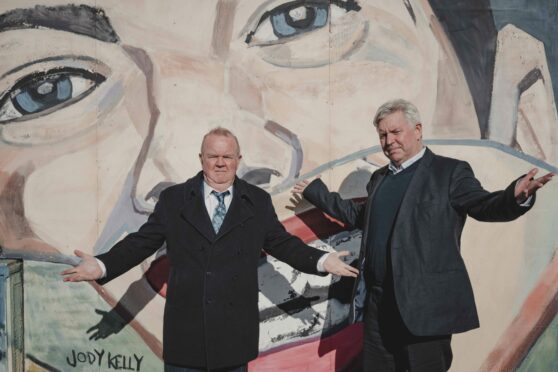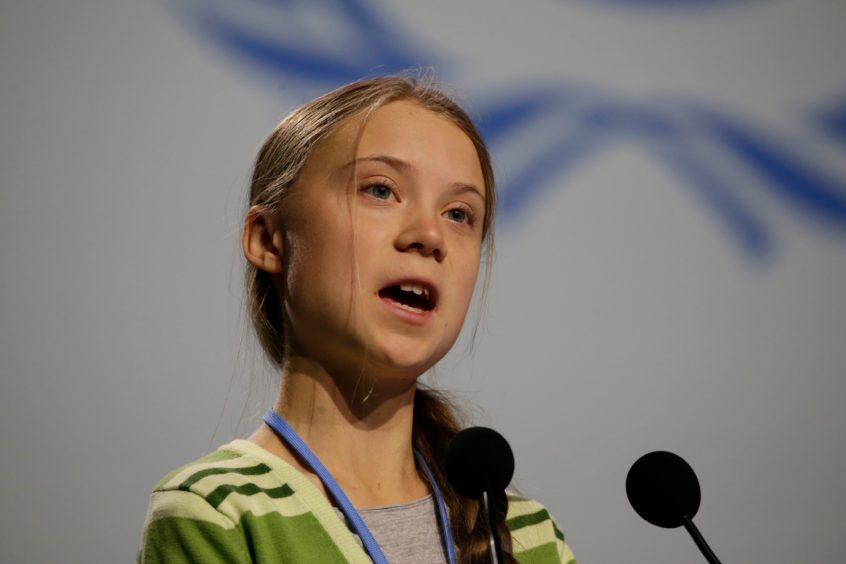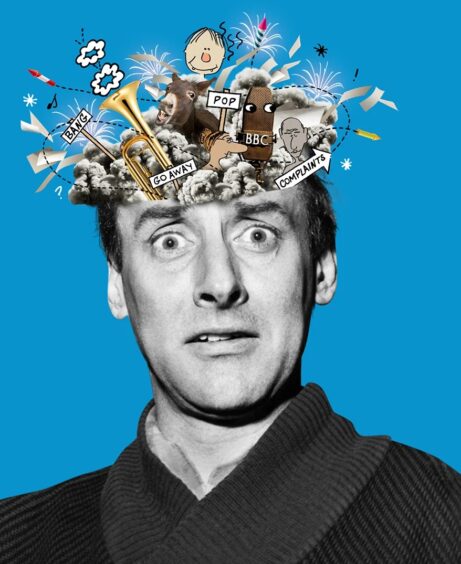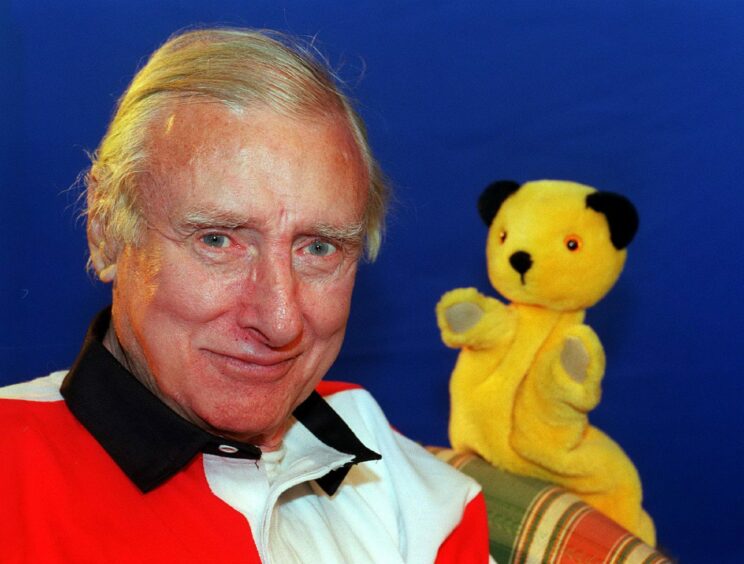
For fans his free-wheeling, anarchic, pitch-black humour more or less invented modern comedy but Spike Milligan was also an environmental trail-blazer, according to Ian Hislop.
The editor of Private Eye says the comic, who died 20 years ago, not only pioneered satirical comedy but was also outspoken on green issues years before they became a global priority.
Hislop, who has co-written a new stage play about Milligan’s years on The Goon Show, believes he would be sharing a platform with environmental campaigners like Greta Thunberg if he was alive today.
“He was very green and did a lot of eco work when it wasn’t popular,” said the Have I Got News For You panellist. “Some of the things people regarded about Spike as being difficult or stroppy would be quite mainstream now.
“He was preserving trees in parks and talking about green issues – comedians weren’t doing that. A lot of the things he talked about, people would now be saying, yes, you’re right. It’s one of the things he shared with King Charles, who was his great fan.
“Spike would have stood beside Greta Thunberg and he would have liked her, because she’s so rude. That would have appealed to him. Her blah-blah-blah speech was very Spike-y, really. Being difficult was his thing.”
So, too, was being funny, and it was this aspect that Hislop and his long-time writing partner, Nick Newman, wanted to explore in Spike, which covers the India-born comedian’s years after coming out of the Army to the huge popularity of The Goons despite being in almost constant conflict with his bosses at the BBC.
“What we’ve tried to do is find the melting pot in the ’50s when variety was dying out and a whole new brand of comedy – surreal, subversive, anarchic – lit up austerity Britain, and what the genesis of that was,” explained Newman, whose writing career with Hislop dates back to their university days and includes Spitting Image and three other stage plays and a feature film.
Hislop continued: “I knew Spike from his wartime writing but it was Nick who told me how good The Goons scripts were – they were incredible. You can feel Spike’s influence everywhere. There was a moment when we were asked to pitch for an adaptation of his war books – a sort of comic Band Of Brothers – and we went along and said we’d open it with a recording of The Goon Show, and the assistant producer said, ‘Who are The Goons?’. So we didn’t get that job but it made us think we could do a play about The Goons ourselves.”
Milligan was injured in an explosion at the Battle of Monte Cassino, being hospitalised for a mortar wound to his leg and shell shock. The physical wound healed but the mental trauma remained and his experience would go on to colour his comedy, often shading it pitch-black.
Newman said: “The jokes he was doing before he was blown up were funny but they didn’t have the same attitude towards authority that The Goon Show was infused by – the shell shock gave him an edge. His jokes become much darker. There’s an interview he did with Dr Anthony Clare for In The Psychiatrist’s Chair, where he talks about his depression and bipolar nature. He said, ‘Of course, my mother was highly strung; she was hanging from the ceiling’. It was such a black, but funny, joke. He showed that even in the depths of depression he was still making jokes and wanting to make people laugh and he turned it into comedy.
“There are many people who suffer from mental health problems, but there was only one Spike Milligan who turned it into comedy gold.”
But the pair didn’t want to focus the play on his demons, and instead they accessed a wealth of correspondence between Milligan and the BBC, which featured both parties at constant loggerheads, to tell the story of that conflict rather than the one rumbling on inside his head.
“We didn’t want to focus on the mental health issues but instead we wished to make it an out-and-out celebration, where people would come out of the theatre feeling happy rather than thinking why was he ever considered funny when he had all of these demons,” Newman explained.”
“Essentially, he needed something to fight against,” Hislop said. “In the Army, it was the officer class and the general incompetence of the war. Then he went to the BBC and found the same people there. We’ve used a lot of the correspondence because it’s so unintentionally funny from the Beeb’s point of view.
“He was a difficult bloke and we haven’t shied away from that. He had a difficult relationship with the other Goons, especially Sellers, who was becoming absurdly famous and going into films, while it was Spike who was writing the entirety of The Goons scripts, which is kind of annoying, I think.”
Newman added: “There’s a line in the BBC’s correspondence which says that (Harry) Secombe is clearly the talent because he can sing, (Peter) Sellers has his voices, but Milligan is something of a freak contributor because not only does he write it all but he does voices and performs, too. They didn’t know what to do with him. It becomes apparent that he is being paid half what the other two got, which really rankled with him.
“He ended up writing to the director-general about his level of pay. He was once paid a special fee, which he worked out was less than what he normally got. He pointed it out and also discovered that Galton and Simpson, who were writing Hancock’s Half Hour, were being paid more jointly than he was getting for The Goon Show. He was told that there was two of them, so they couldn’t survive if they split the money between them.”
The Goon Show ran from 1951 – when it was first known as Crazy People – to 1960 but Milligan was constantly paranoid about being sacked and there were 30 attempts to get rid of The Goon Show, which Hislop described as “an amazing badge of honour”.
The Goons were the “first post-war mania”, according to Newman, pre-dating Elvis or The Beatles. “They would do things for the fun of it, like deciding to write the worst song and get it into the charts, which they did with The Ying Tong Song.
“They could do anything they liked and that’s partly where Spike’s bitterness came from. Despite the success, he was never happy as a result of it. In our play, Secombe is the voice of reason and he tells Spike that this is as good as it gets and you don’t appreciate it now, but we’re living in a golden age. I think Secombe recognised it but Spike didn’t until it was too late; he spent the ’50s and ’60s railing against the powers that be.”
Hislop added: “When you meet someone later in life, it’s easy to forget how extraordinary they were as young men, and you become used to the idea of them as old people. I thought, we could write something where they were young again and they shocked the hell out of everyone. Goon-mania was a real thing.”
Daughter: It’s like seeing my dad back on stage
Hislop and Newman have received approval for the show from one of Milligan’s six children.
Jane, the fourth of his children, saw the show in Cheltenham earlier in the tour and gave her approval to both it and Robert Wilfort’s portrayal of her father.
Hislop said: We were terrified because this was her life we were doing and we hoped we hadn’t messed it up, but we got a big thumbs up from her.”
Newman added: “Robert is very physical in the role but he doesn’t do an impression. His relationship with the audience is very Spike-like. Jane said to Robert afterwards that it was her dad on stage, and she’s since been to see it several times.
“We wanted to give the impression that Spike never stopped performing, and we asked Jane if we were right about that. She told us that they used to have an intercom at home, and her dad would ring her on it and read a joke or a poem and ask if she liked it. When we next revise the show, we’ll be including that.”
In his own words
All I ask is the chance to prove that money can’t make me happy.
I turned and rubbed my hands with glee. I always keep a tin of glee handy.
I thought I’d begin by reading a poem by Shakespeare, but then I thought, why should I? He never reads any of mine.
Money can’t buy friends but you get a better class of enemy.
Life is a long agonised illness only curable by death.
We haven’t got a plan, so nothing can go wrong.
My father confused me. From the ages of one to seven, I thought my name was Jesus Christ.
One day the “don’t knows” will get in and then where will we be?
Is there anything worn under the kilt? No, it’s all in perfect working order.
Education isn’t everything. For a start, it isn’t an elephant.
Dúirt mé leat go raibh mé breoite, Irish for “I told you I was ill”, inscribed on his gravestone.

Enjoy the convenience of having The Sunday Post delivered as a digital ePaper straight to your smartphone, tablet or computer.
Subscribe for only £5.49 a month and enjoy all the benefits of the printed paper as a digital replica.
Subscribe © Paul White/AP/Shutterstock
© Paul White/AP/Shutterstock
